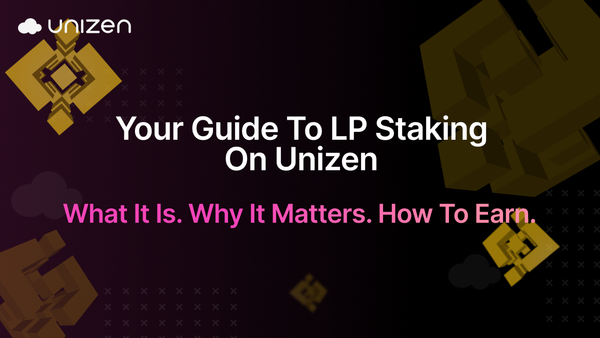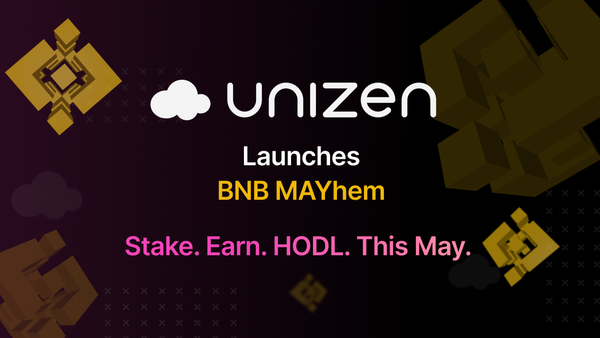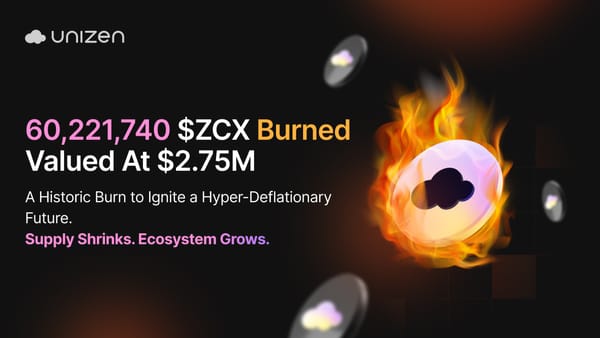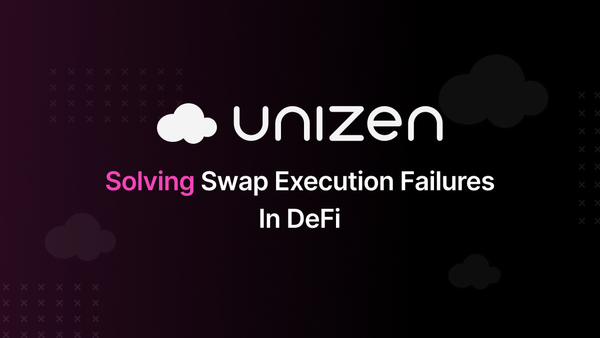How To Create an NFT
Discover how to create your own NFT with this comprehensive guide. Learn to choose the right digital media, select a blockchain, set up a digital wallet, mint your NFT, and list it for sale. Ideal for all skill levels.
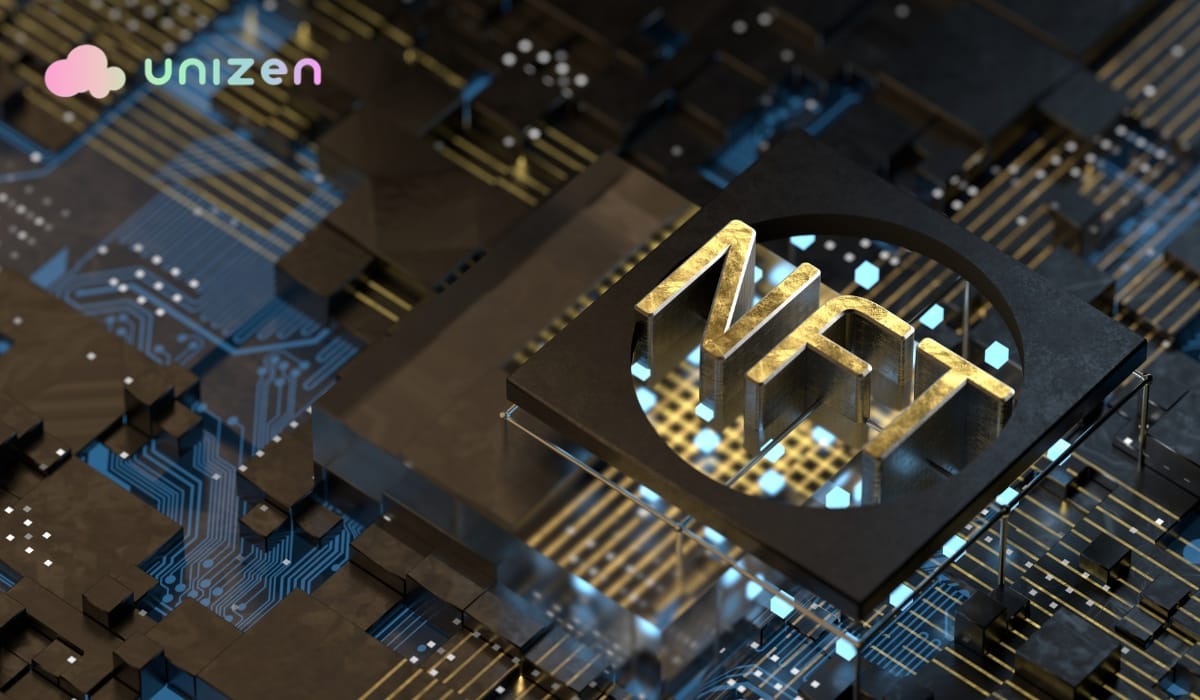
The process of creating an NFT can seem very daunting. Still, it is relatively straightforward, thanks to the multiple user-friendly tools and platforms available to the average user today. In this article, we will walk you through every step in making your very own NFT from scratch using essential tools and software available at your fingertips today. Whether you're new to digital assets and creating an NFT or have some experience but need a little guidance, this article has something for you.
1. Understanding NFTs
An NFT (Non-Fungible Token) is a unique digital asset that represents ownership of a specific item. It is proof of the authenticity of an item stored and verified on blockchain technology. NFTs can represent art, photographs, music, videos, or even virtual real estate.
Why are NFTs said to be non-fungible? To understand this, you'd need to understand the concepts of fungibility and non-fungibility. Fiat currency (US Dollar, British pound, Yen, etc.), cryptocurrencies (Bitcoin, Ethereum, etc.), and commodities (gold or silver) are fungible because they are interchangeable with each other as they hold the same value, unlike NFTs. For example, a $10 bill is equivalent to any other $10 bill, and one Ethereum equals any other Ethereum. On the other hand, NFTs are unique items and cannot be exchanged on a one-to-one basis, as each token has its own distinct characteristics and value.
Furthermore, fungible assets can be broken up or divided into smaller units to retain their worth, and all the assets are uniform in quality and value. While you cannot break a non-fungible asset into smaller units without losing its worth, just the way you can't split a painting in half and still expect it to retain its value. Also, a non-fungible asset can have a massive difference in its value and quality from another non-fungible asset.
1.1. How NFTs Work
NFTs leverage blockchain technology and smart contracts to create original and unique digital assets securely and transparently. An NFT starts with a digital file (photograph, video, music, etc.) uploaded to a platform that supports NFTs, like OpenSea or Rarible. This is called minting. During this minting process, the platform uses a piece of code on the blockchain, a smart contract to create a unique digital token representing the file. Similar to signing a physical piece of art, artists can "sign" their NFTs when they make them, proving the asset's originality and adding to the creator's details and a unique identifier. After the NFT is minted, it is recorded on the blockchain, a secure ledger that nobody can alter. Then, the NFT can be traded on various online marketplaces.
Blockchain technology plays a vital role in the creation and functionality of NFTs. Think of blockchain as a digital record book or ledger where transactions are recorded across a network of computers. Unlike a bank or other centralized systems where a single authority controls all the data, blockchain utilizes a decentralized technology, ensuring transparency at its peak. This way, nodes automatically validate and record every transaction and cannot be altered or deleted, enhancing trust and accountability. NFTs are created and minted using smart contracts on the blockchain.
Each NFT on the blockchain is represented by a unique token ID, ensuring each NFT is distinct and cannot be replicated or counterfeited. It proves originality and ownership no matter how many times it has been traded. This ownership history maintained by the blockchain is called provenance. The record contains details of the creator, previous owners, and timestamps of transactions, verifying the NFT's authenticity. Blockchain technology enables NFTs to be bought, sold, and exchanged on decentralized marketplaces, facilitating transactions securely and transparently. It also allows NFTs to be traded globally with fantastic speed. You can say that blockchain technology is the backbone of NFTs because it provides the infrastructure for creating, substantiating, and exchanging unique digital assets.
Like traditional contracts, smart contracts involve an agreement between parties that formalizes agreements and ensures compliance with the agreed-upon terms. However, it doesn't require suits drawing up terms; instead, it is automatically enforced and executed by code on the blockchain. Smart contracts generate a unique ID and record an asset's metadata on the blockchain when it is created. They maintain the provenance of NFTs and update ownership records anytime that asset is traded. They can also be programmed to automatically distribute royalties to the asset's creator whenever it is resold. Smart contracts are automated agents that execute and enforce agreements based on predefined conditions. Smart contracts can interact with other smart contracts and decentralized apps (dApps) to implement specific actions about an NFT.
2. Preliminary Steps
Creating an NFT involves taking some simple but important steps to ensure a seamless process. From choosing your blockchain to setting up your wallet, selecting a marketplace, and everything in between, it is crucial that you understand these steps and precisely follow them to improve your chances of success.
2.1. Choose Your Digital Media
First, what digital item do you want to turn into an NFT? This item could be anything from digital art, photographs, videos, 3D models of digital sculptures, game assets, music, or a GIF. The choice is entirely up to you, so choose at will.
Just the way there are legal considerations to using someone else's creation, it is crucial that you address these considerations before minting your NFT, especially regarding ownership and intellectual property rights. You must ensure that your digital media is your original creation to avoid copyright infringement concerns. If your media includes brand names, logos, or other trademarked elements, you must ensure you have the right to use them. Review the terms of service of the NFT platform you choose to use to mint your NFT. They often have specific rules about legal responsibilities you must adhere to. You can choose to license your NFT to define what the buyer has the liberty to do with it. When minting your NFT, you can include terms for automatic royalties to earn a percentage of the sales every time your NFT is sold (on platforms like OpenSea or Rarible).
2.2. Select a Blockchain
Next, you have to decide on the blockchain you'll use. Selecting the suitable blockchain is very important because it affects the minting process, transaction fees, speed, and overall experience of creating and managing your NFT. Here are some popular blockchains you can select from:
Ethereum
Ethereum is the most popular blockchain for NFTs because of its large smart contract functionality and broad developer community. The token standards most commonly used are ERC-721 and ERC-1155.
Pros:
- Ethereum has the most organized and established ecosystem for NFTs, with numerous marketplaces (e.g., OpenSea, Rarible) and tools.
- NFTs made on the Ethereum blockchain are widely supported across different platforms and wallets.
- The Ethereum blockchain has a large developer community and extensive documentation, making it relatively easier to find resources and support.
Cons:
- Gas fees (transaction fees) can be very high on Ethereum, especially during times of network congestion.
- Also, during these periods of high traffic and network congestion, Ethereum can experience slow transaction times, which can be problematic for real-time applications.
Solana
Solana is widely known for its high-speed transactions and relatively low fees. This makes it a good choice for NFT creators seeking efficiency. The Solana blockchain uses the SPL token standard for NFTs.
Pros:
- Transaction fees are significantly lower on Solana as compared to Ethereum
- Solana takes pride in its high throughput that allows it to have speedy transactions
- Solana has had an increasing number of NFT projects and marketplaces as time passes.
Cons:
- The NFT ecosystem on Solana is still growing as compared to Ethereum. As a result, it has fewer tools and platforms than the Ethereum ecosystem.
- While improvements are still being made, Solana has experienced network outages and stability issues.
Flow
Flow is a blockchain specifically designed for games and digital collectibles. It was created by Dapper Labs, the companies behind NBA Top Shot and CryptoKitties. Flow utilizes the Flow token standard for NFTs.
Pros:
- In its creation, Flow is perfectly optimized for digital collectibles and gaming applications
- Flow has a superb user experience with easy onboarding for non-crypto users
Cons:
- Flow is less decentralized compared to other blockchains and may cause concerns for some users
- It is a relatively minor ecosystem with fewer NFT projects and marketplaces than Ethereum and Solana.
Binance Smart Chain (BSC)
Binance Smart Chain is a blockchain developed by Binance. It utilizes the BEP-721 token standard for NFTs.
Pros:
- It offers lower fees than Ethereum.
- It operates at a faster transaction time.
- It is compatible with Ethereum's Virtual Machine (EVM) and allows for easy migration of all Ethereum-based projects.
Cons:
- BSC is more centralized, positioning Binance with significant control over the network
- BSC has been implicated in several security incidents and exploits
2.3. Set Up a Digital Wallet
Moving forward, you'd need to set up a digital wallet. This wallet allows you to manage your NFTs, store cryptocurrencies, and interact with the blockchain. some popular wallets you can set up include:
- MetaMask: This is one of the most widely used digital wallets. To set up MetaMask on your device, download and install the app from the MetaMask website*, create a wallet, and secure it with a strong password and the 12-word recovery phrase MetaMask will generate for you. Easy peasy: Your MetaMask wallet is ready to be used.
- Coinbase Wallet: You can also set up a Coinbase wallet in steps similar to MetaMask.
- Ledger Nano X: To set up a Ledger Nano X, you must purchase it from the official Ledger website or a trusted retailer. After unboxing it, follow the steps to set it up, using strong passwords and backing up your recovery phrase.
Additionally, poor security measures make it incredibly easy to lose your digital assets. For this reason, you'd need to store private keys and recovery phrases securely. Write down your recovery phrase and private keys on paper and store them in a highly secure place, like a safe. You must also avoid storing your recovery phrase or private keys in a digital format on your phone, computer, or cloud storage to prevent hacking. Instead, use a hardware wallet like Ledger Nano X or Trezor to store private keys offline securely. Only download wallets from their official websites to avoid malware or phishing.
3. Creating the NFT
Now that you understand what NFTs are, it’s time to create one. We will walk you through the steps you'll need to take to create and mint your NFT. However, there are basic foundational steps to set up and implement for a smooth creation process.
3.1. Choose an NFT Platform
Choosing the right NFT platform is a critical step. There are various marketplaces available, each with its unique features, benefits, and drawbacks.
- OpenSea: OpenSea is the largest and most well-known NFT marketplace with extensive space. It supports multiple blockchains and offers a seamless, user-friendly interface. However, the high gas fees on Ethereum may be a disadvantage.
- Rarible: Rarible is a community-driven marketplace for creating and trading NFTs. It offers decentralized governance with smart contracts that you can personalize and a tight-knit community. However, it has less traffic than OpenSea.
- Mintable: Mintable is an incredibly easy-to-use marketplace that offers gasless minting options. It has extensive education resources but a smaller user base and fewer structures than OpenSea.
- Solanart: As its name implies, Solanart is a marketplace known for its low gas fees and fast transactions. However, it has a smaller community and thus fewer tools than Ethereum-based platforms.
Here are some features you must consider before choosing an NFT platform:
- User interface: Endeavor to search for platforms with easy-to-use interfaces for navigating.
- Fees: Ensure you consider mining, listing, and transaction fees, especially Ethereum gas fees.
- Community: Choosing a platform with active communities and dedicated support can help promote your NFT.
3.2. Minting the NFT
Steps to follow to mint the NFT include:
- Connect Your Wallet: Choose a digital wallet that is compatible with the marketplace you selected(e.g., MetaMask for Ethereum), Connect your wallet, and authorize the connection by adhering to the prompts given in your wallet app.
- Upload Your Digital Media: Before uploading your digital media, ensure it is in a supported file format (JPEG, PNG, MP3, MP4, etc.). Next, follow the platform's instructions to upload your file and provide additional information such as title, description, and properties.
- Create a Smart Contract: Creating a smart contract for your NFT involves several important steps that shape the identity and functionality of your digital asset. First, you'll need to set properties by defining the NFT's specific features, such as its name, external link, and description. This initial step lays the foundation for how your NFT will be recognized and accessed. Additionally, you can establish levels; these are set characteristics that you can use for gamification or categorization. Finally, Add the metadata to describe your NFT comprehensively. This may include details like the background story, visual traits, and other special properties.
- Set Royalties: Decide the percentage of future sales you would like to receive as royalties, then configure by entering the percentage while creating the NFT on the platform. Setting up royalties would ensure you receive payments anytime your NFT is traded.
4. Listing and Selling the NFT
This is the process of making your NFT available for sale on a marketplace after it is minted. Listing your NFT entails the following steps:
4.1. Listing the NFT
You could employ two methods when setting a price for your NFT. You could go for a fixed, predetermined price or choose an auction format so that buyers can place bids and competitively outbid each other.
Fixed prices are more suitable for straightforward sales, and the price remains at what you set. While an auction may take more time, it gives room for the price to be driven higher through competitive bidding. It is crucial to note that most marketplaces charge a fee for listing and selling your NFT. Therefore, conduct your research and understand the fees before listing your NFT. Gas fees are also transaction fees to consider because they could fluctuate and impact your overall cost.
4.2. Promoting Your NFT
Promoting your NFT would boost its visibility, attract potential buyers, and enhance its value. It would also increase your networking opportunities and enhance your credibility and trust. To promote your NFTs, you must leverage effective promotion strategies on various platforms to maximize your NFT's visibility, sales potential, and success.
Social media provides a platform where you can build awareness of your NFT to potential buyers and attract their interest. Using platforms like Discord, Instagram, and X, you can share your NFTs, engage with interested parties, and join online communities with other NFT enthusiasts.
Art communities like Reddit and DeviantArt allow you to share your work and build a relevant network. Finally, collaborating with other NFT artists, influencers, or content creators can help you reach a wider audience and foster mutually beneficial promotional opportunities.
Building a community can significantly improve the success and survival of your NFT projects. You can create a community by actively engaging with potential buyers and collectors on social media and art communities. This way, you can gain trust and build credibility, continuously interact with engaged parties, and increase your likelihood of success. You can also secure valuable collaborations and stay informed with tips, knowledge, and best practices. A community gives you the avenue to communicate and interact with experienced parties.
5. Costs and Fees
Awareness of the costs and fees will help you create a budget, estimate costs, and choose the blockchain and marketplace that are more suitable for you. Minting fee, also known as gas fees is charged to create or "mint" a new NFT on a blockchain network. For instance, the Ethereum blockchain provides a smooth minting process, but the fees vary based on transaction complexity and network congestion. It may cost about $2.90 but could range up to $1000. In contrast, the Solana blockchain provides regular minting at a lower price than Ethereum. Three minting transactions cost about 0.00135 SOL (less than 1 cent). When considering other blockchains, it is essential to research the fees to afford you an informed decision.
Some platforms also charge a specified fee upfront to list your NFT. The marketplace is often entitled to a percentage of your sale price when you sell your NFT using them. This is typically 2.5% on OpenSea and 1% from both the seller and buyer side on Rarible.
6. Legal and Ethical Considerations
Your NFT is your intellectual property, so legal and ethical considerations must be included in your smart contract to ensure a clear understanding between you and your potential buyers.
You can decide to retain copyright while transferring ownership of your NFT when it is sold, meaning you have the right to use, reproduce, and distribute your work regardless of ownership. However, this appeals less to buyers when they do not have full rights to the asset. On the other hand, you can decide to transfer the copyright to the buyer upon purchase, affording them the full rights to the asset. This is more attractive to buyers, but you must gain creative control over how your work would be used, modified, or represented.
Additionally, Blockchains like Ethereum consume a significant amount of energy, so it is imperative that you are aware of your project's environmental impact and consider supporting carbon offset projects or using eco-friendly blockchains like Tezos.
7. Advanced Topics
You can create themed collections of NFTs to attract collectors of specific art or content. Collections can boost your visibility, increase the perceived value of your work, and create a cohesive brand.
Try In today's world, you do not have to create digital artwork from scratch. If you have a clear idea of the piece you want to create, you can use generative algorithms to create unique, computer-generated art and leverage AI tools to produce diverse NFTs, consequently speeding up your creative process.
Conclusion
You're now well-equipped to successfully create, list, and sell your NFT. By following these steps, understanding the associated costs and advanced opportunities, and considering the legal aspects of the NFT space, you're all set to venture into the marketplace. We'd love to know your progress and learn from your experiences.
